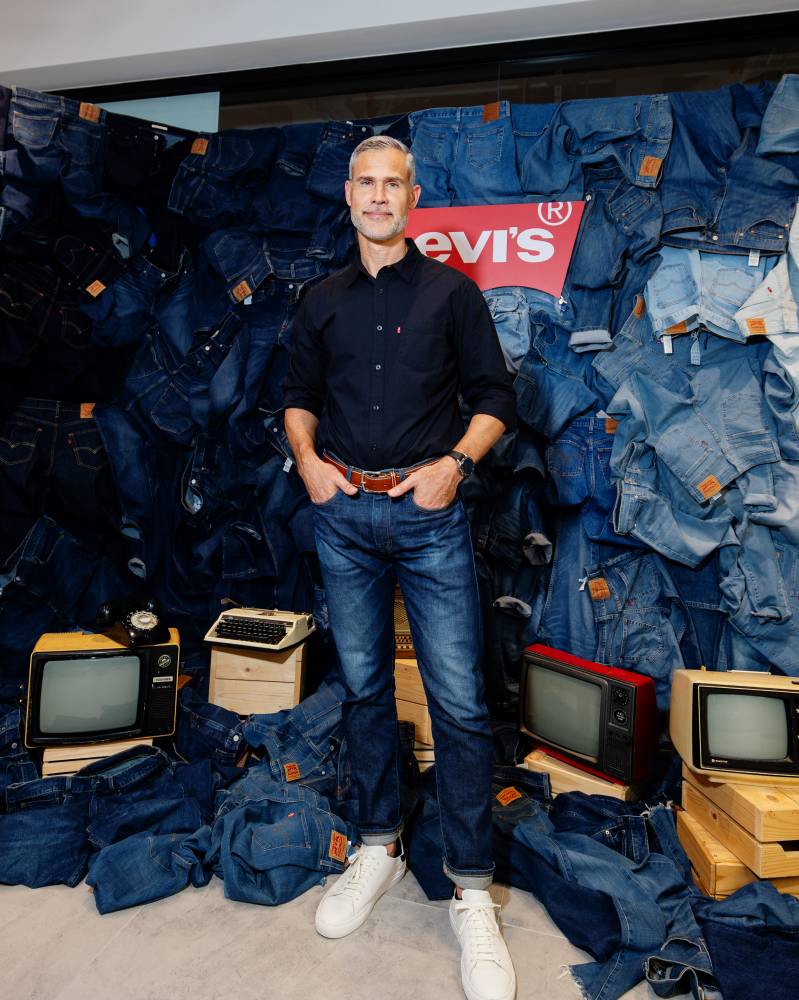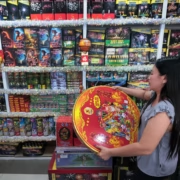Levi’s selvedged dreams for the Philippines

KUALA LUMPUR, Malaysia—Nuholt Huisamen lives and breathes denims. He wears them to work, weddings and black-tie dinners; he can’t even remember the last time he washed the 502 he was wearing during this interview.
An advocate of former Levi’s CEO Chip Bergh’s dirty jeans manifesto, Huisamen likes his pants sturdy, rigid. He knows what he’s talking about—after all, he’s the best salesman out there, having been with Levi Strauss and Co. for almost 22 years now.
“[Bergh] was quoted many years ago and it was a big controversy. I will say it again, I don’t wash my jeans every day. I can’t remember when last I washed these jeans. You can spot clean it, you can air it out. There are different ways to do it. Jeans don’t have to be washed every day,” the current managing director and senior vice president for the East Asia-Pacific region says in an interview with the Inquirer.
Levi’s “buy better, wear longer” mantra is not mere marketing gimmick. For Huisamen, saving trillions of liters of water by not washing one’s jeans is part and parcel of the business’ impact on consumerism. Sustainability is no longer a buzzword in Filipino vocabulary these days. It’s a need, albeit still an abstract concept, to a general population that gets to experience contrasting disasters of heavy rains and lack of water in a year.

This is also the reason why Levi’s does not want to be called fast fashion. “You choose Levi’s, you make a choice for the planet,” he says, adding, “We don’t bring our products to the market fast, we’re very mindful of the environment. We want to stand for authenticity and quality.”
Expansion
Levi’s has been around in the Philippines for decades now—either as a “balikbayan” box staple or as merchandise in popular malls. However, it’s only this year that it began operating company-owned stores in a bid to recharge the denim culture in the country and learn from its Filipino customers in return.
The Philippines is a big part of its ambition of becoming a $10-billion company with particular focus on the direct-to-consumer strategy. It was a tectonic shift made in 2022 to reduce its reliance on malls and wholesale channels.
Levi’s can’t say how many more company-owned stores it will be opening in the future since it is still “reviewing plans.” At present, however, it has three of such stores: in Okada Manila, Shangri-La Plaza and The Outlets in Lipa.
“Southeast Asia has always been a very buoyant market for us. It’s been a fast growing market for us. And so Philippines is key,” Huisamen says, and that “[it] will be our fastest growing market within Southeast Asia for next year.”

While Levi’s saw “some softness” in sales in the region the past year, the Philippines tells a different story.
“If I say softness, the growth has come down to lower single digits, whereas in the Philippines, it is still in the double-digit territory,” he says, adding the country came out quite late from the pandemic. It’s only now that Levi’s is seeing a buying surge, he says.
“We’re still thinking [that] with our owned- and operated- approach, that we’re now sort of starting to go into the Philippines, and with our commitment from our partners, we can keep that momentum into next year,” he says.
Amid Levi’s new strategy, Huisamen says the company has its franchise partners to thank for the growth trajectory. It has, for example, 22 stores in tandem with the SM group as of 2023.
Brighter, bigger stores
Another key aspect of its target to achieve a world-class retailer tag is elevating those stores, owned or franchised, to one that is responsive to consumer’s quirks. Its NextGen Indigo store format is bigger, brighter and more immersive; it houses a tailor shop where one can customize the denim, a lounge and extensive displays of various lines from affordable to premier.

“One of the historical issues that we’ve had in Southeast Asia generally, we had very small stores … [because in] the past, we’ve always been known as a men’s bottoms brand,” he says.
Huisamen took note of women customers driving change. In direct-to-consumer stores worldwide, the segment was up 21 percent in the second quarter of 2024. Sales of denim skirts, dresses and jumpsuits increased in the “triple digits.”
While “extra doors” are the goal, Levi’s also wants “better quality, size and execution.”
Half of its stores worldwide are still in older, pioneer formats that are darker and smaller. “As those leases come up with the landlords, we will transition them into indigo doors,” which have boosted sales by about 10 percent to 30 percent “by creating a better environment for the shopper,” he adds.
Vintage 501s, selvedge
Then there’s the range of available lines on offer. Huisamen recalls that when they launched the Levi’s Vintage Clothing and Made in Japan lines at the Mall of Asia branch, an indigo store, about a year ago, “[these] were sold out before they could hit the store.”
These are the more expensive Levi’s categories, that while “aspirational,” they could still be achievable especially for the enthusiast. These lines usually are selvedge, considered more durable due to a special weaving technique to create the loom. For collectors, it’s the pokemon (pocket monster) of jeans and can be distinguished by edges that do not need securing by sewing because they do not fray. To make them distinguishable (or for bragging purposes), the wearer usually tucks the hems inside out.

“The demand for premium quality product is extremely high, and so that is one of our fastest growing segments within the Philippines … I would say, a couple of years back, we never even had it in the Philippines, and today it’s one of our fastest growing pieces within our store,” he says.
Ageless 501
Staying relevant, even for a pioneer, is important amid threats from competition. Levi’s has that on both sides: the cheaper alternatives and the designer-centric variants.
For Huisamen, there’s still comfort for being “bang in the middle” in terms of attainability. “There’s a wide middle because you have a very small portion at the top, and you have a big base at the bottom, and we have a big space in the middle, which also touches the top end, but also has an entry price point.”
A pioneer in the business, having manufactured the first pants in history—the iconic 501—Levi’s will always set the trend or be on trend. Take, for example, the loose, baggy jeans that became popular in the 1990s and made a comeback in recent years.
“I can tell you, that in the immediate future, the trend will still be loose, baggy pants. Don’t get me wrong. Trends are like that, right? There’s a core consumer, and then the trends start at the top, and then eventually that trend becomes the core, and when it becomes too mainstream, the trends shift the other way around. I’ve been with the company so long, I’ve seen them loose [then] narrow[then] loose [then] narrow,” he says. He suggests keeping both skinny and loose in one’s closet.
The 501, which is his all-time favorite, remains the most popular in the Philippines. “I can answer that question in my sleep, in most countries, because it’s such an icon … but as I said, newer, baggier, looser products are also available … We just need to stay relevant.”
Levi’s considers ages 24 to 30 a sweet spot as “they are still getting into their first job, they have a bit of money and are still young to look for trends, for fashion, the right product.”
He says denims will always appeal to anyone. “Levi’s is a very democratic brand. You hear stories where people talk about, ‘Oh, my father used to wear Levi’s,’ … so you could definitely say there’s an older generation of buyers.”
He also has respect for Filipinos’ knowledge of denims, being the “51st state of the US” where the first pair of jeans was born and prompted a fashion revolution.
Huisamen, however, is sticking to his favored 501s lest he betrays his age. He does not want to be caught with his (baggy) pants down, so to speak.
However which way one would want to wear his or her trousers, however, Huisamen says, “I would argue that the denim jean is the most revolutionary apparel item ever.”





















